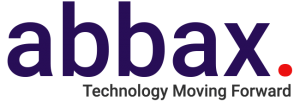35 Features you can only get with a VoIP Phone System and their functions
VoIP (Voice over Internet Protocol) phone systems have become increasingly popular in recent years due to their cost-effectiveness, flexibility, and advanced features. These systems use the internet to transmit and receive phone calls, eliminating the need for traditional phone lines.
In this article, we will be discussing 35 features that are unique to VoIP Phone Systems, along with their functions. These features include everything from call forwarding and recording to virtual meeting rooms and web-based management, providing organizations with a comprehensive and efficient communication solution. Whether you’re a small business looking to upgrade your phone system or a large enterprise seeking advanced communication capabilities, a VoIP phone system may be an ideal solution for you.
- Auto Attendant: Automatically answers and directs incoming calls to the appropriate extension or department.
- Call Forwarding: Allows you to forward calls to another phone number or extension.
- Call Recording: Records and stores audio of phone calls for future reference.
- Call Waiting: Notifies you of incoming calls while you are on another call.
- Conference Calling: Allows multiple parties to participate in a single phone call.
- Do Not Disturb: Blocks incoming calls from reaching your phone.
- Find Me/Follow Me: Allows calls to be routed to multiple phone numbers, ensuring that you can be reached wherever you are.
- Hold Music: Plays music to callers while they are on hold.
- Intercom: Allows you to make announcements or send audio messages to other extensions within your organization.
- IVR (Interactive Voice Response): Allows callers to navigate through a menu of options using their voice or keypad.
- Music on Hold: Plays music to callers while they are on hold.
- On-demand Conference: Allows you to start a conference call at any time.
- Queue: Automatically holds callers in a queue until an available representative can take the call.
- Ring Groups: Rings multiple phones at the same time to increase the chances of someone answering the call.
- Speed Dial: Allows you to quickly call frequently-dialed numbers.
- Time-based routing: Routes calls to different extensions or departments based on the time of day.
- Transfer: Allows you to transfer a call to another extension or phone number.
- Video Conferencing: Allows multiple parties to participate in a single video call.
- Virtual Meeting Room: Allows multiple parties to join a virtual meeting room to conduct a call or video conference.
- Virtual Receptionist: Allows you to create a virtual receptionist that automatically answers and directs incoming calls.
- Voicemail: Allows callers to leave a voice message when you are unavailable to answer the call.
- Voicemail to Email: Allows voicemail messages to be forwarded to your email inbox.
- Web-based management: Allows you to manage your phone system through a web-based interface.
- Call Parking: Allows you to put a call on hold and then pick it up from any phone in the system
- Call Queue: Allows you to manage a queue of calls, assign them to different agents and monitor their status
- Call Reporting: Allows you to track and report on call volume, duration, and other metrics
- Call Screening: Allows you to screen incoming calls before answering them
- Call Blocking: Allows you to block unwanted calls
- Call Barging: Allows a supervisor to listen in on an ongoing call
- Call Whispering: Allows a supervisor to whisper instructions to an agent during a call
- Call Transfer to Voicemail: Allows you to transfer a call directly to voicemail
- Call Transcription: Allows you to transcribe the audio of a call into text
- Multi-language support: Allows you to set up the system to support multiple languages
- Live call monitoring: Allows a supervisor to monitor the call in real-time
- API integration: Allows you to integrate the system with other software and services
